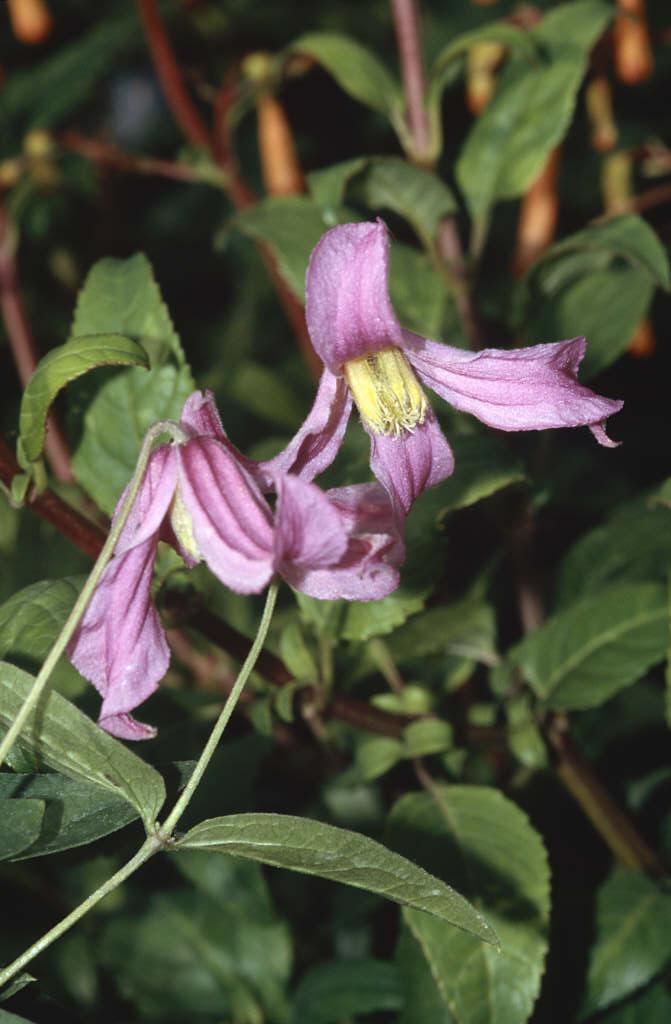Clematis 'Pangbourne Pink' (I)
clematis 'Pangbourne Pink'
'Pangbourne Pink' is a deciduous non-clinging woody-based perennial to 60cm tall, with large, simple, ovate leaves and nodding, bell-shaped flowers 5cm long, the petals a bright pinkish-mauve inside, a deeper shade outside and flowering early summer to autumn

Buy this plant
Size
Ultimate height
0.5–1 metresTime to ultimate height
2–5 yearsUltimate spread
0.1–0.5 metresGrowing conditions
Moisture
Moist but well–drainedpH
Alkaline, NeutralColour & scent
| Stem | Flower | Foliage | Fruit | |
| Spring | Green | |||
|---|---|---|---|---|
| Summer | Green | |||
| Autumn | Pink | Green | ||
| Winter |
Position
- Full sun
- Partial shade
Aspect
South–facing or North–facing or West–facing or East–facing
Exposure
Exposed or Sheltered Hardiness
H6Botanical details
- Family
- Ranunculaceae
- Native to GB / Ireland
- No
- Foliage
- Deciduous
- Habit
- Bushy
- Potentially harmful
- Skin irritant. Wear gloves and other protective equipment when handling. Pets (rabbits): Harmful if eaten. For further information and contact numbers regarding pets, see the HTA guide to potentially harmful plants
- Genus
Clematis can be deciduous or evergreen shrubs or herbaceous perennials, mostly climbing by twining leaf-stalks, and often with showy flowers. Some have attractive fluffy seedheads in autumn
- Name status
Accepted
- Horticultural Group
- Integrifolia Group clematis are woody-based subshrubs with non-climbing or semi-climbing herbaceous stems, and bell-shaped or flat flowers on the current year's growth, in summer and early autumn
How to grow
Cultivation
Plant in a moisture-retentive, well-drained soil. Keep the base of the plant and roots cool and shaded by carefully positioning other plants or a layer of pebbles or flat stones at the base. Plant with the crown of the clematis at soil level. Ideal for the front of a border, usually supported by other plants. See clematis cultivation for more advice
Propagation
Propagate by division or basal stem cuttings
Suggested planting locations and garden types
- Cottage and informal garden
- City and courtyard gardens
- Flower borders and beds
- Wall side borders
Pruning
Pests
May be susceptible to aphids, snails and caterpillars; petals may be eaten by earwigs
Diseases
May be susceptible to honey fungus (rarely), clematis wilt and clematis slime flux
Get involved
The RHS is the UK’s gardening charity, helping people and plants to grow - nurturing a healthier, happier world, one person and one plant at a time.